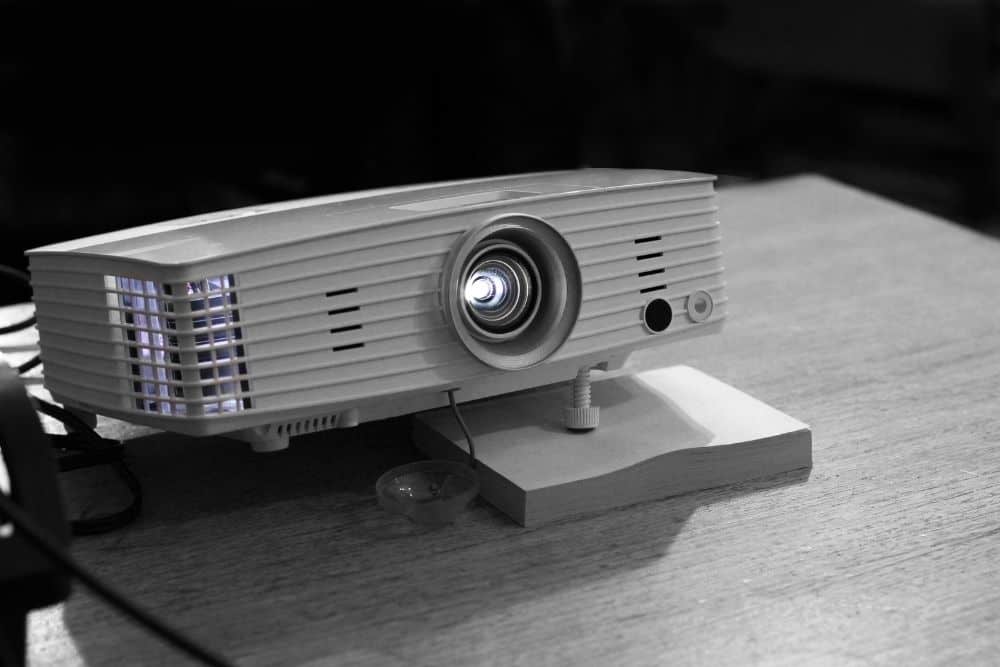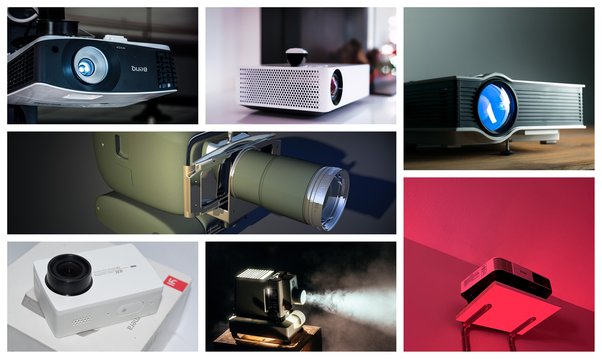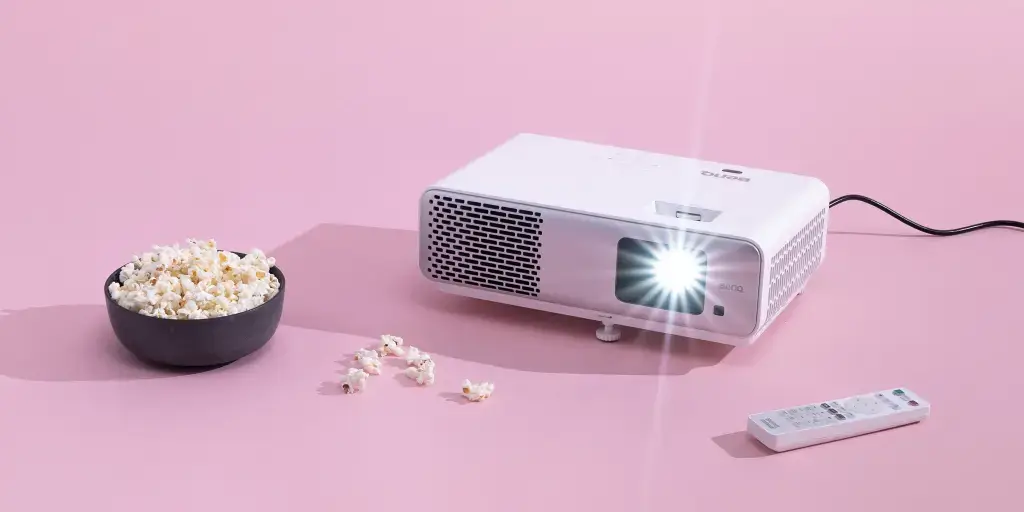Have you ever considered a projector’s electrical requirements? How many amps does a projector use?
When considering the power requirements of this versatile device, these queries frequently arise. Projectors have grown in popularity because they can display fascinating graphics and presentations in various contexts, including boardrooms, classrooms, and home theaters.
To ensure smooth and dependable functioning, it is essential to understand the amperage requirements of a projector.
A projector’s amperage can change depending on the brand, features, and power needs. Projectors typically use between 1.5 to 5 amps of current to provide a general answer.

This brief article will delve into the typical amperage range projectors use, illuminating their power usage and assisting you in accurately estimating their electrical requirements. So let’s start this enlightening adventure to find out just how many amps does a projector use.
Let’s now get into the thorough, step-by-step procedure for determining how many amps does a projector use:
Step 1: Identify the wattage of the projector
The projector’s wattage rating is a crucial aspect in calculating its amperage. Look for this information on the manufacturer’s website or in the projector’s user manual. Usually, the wattage is given in a range such as 150W to 300W.
Step 2: Determine the voltage requirement
Ordinarily, projectors run on conventional voltages like 110-120V or 220-240V. To find out what voltage the projector requires, look at the specifications.
Step 3: Calculate the amperage
Use the following calculation to determine the amperage: Wattage (W) / Voltage (V) equals Amperage (A). As an illustration, the amperage would be 1.67A (200W / 120V) for a projector with a 200W power rating.
Step 4: Consider additional factors
Remember that the calculated amperage represents the projector’s power consumption under typical working conditions. The actual amperage usage, however, may vary depending on settings for the eco mode, brightness levels, and any other features, such as built-in speakers or networking capabilities.
For more detailed information on how these factors can affect power usage, it’s a good idea to contact the manufacturer or consult the user manual.
Step 5: Check the power supply capacity
Lastly, confirm that the electrical circuit or power supply you plan to connect the projector to can handle the expected amperage. It is essential to take this step to prevent overloading the circuit and any electrical risks.
Types Of Projectors And Their Consumption

There are many different types of projectors on the market, each with distinctive features and power consumption patterns. Here are some popular projector types and a quick breakdown of their power requirements:
LCD Projectors:
LCD (Liquid Crystal Display) projectors use a combination of three LCD panels to project images. They are renowned for their vivid colors and high-definition picture quality.
Depending on the model’s capacity for brightness and resolution, LCD projectors often use 150 to 400 watts of electricity, which is considered to be a modest quantity.
DLP Projectors:
DLP (Digital Light Processing) projectors produce images by reflecting light off small mirrors. Their excellent contrast ratios and fluid motion displays have made them very popular.
Comparing DLP projectors to LCD projectors, the former often consumes more power. Depending on the brightness and resolution settings, their power consumption might range from 200 to 500 watts.
LED Projectors:
Compared to projectors that use standard lamps as their light source, LED (Light Emitting Diode) projectors operate more efficiently and have longer lamp lives.
The average power consumption of an LED projector is between 50 and 150 watts, which makes them more economical and environmentally beneficial over time.
Laser Projectors:
Laser projectors use laser diodes to create images, which provide exceptional brightness and color accuracy. They are frequently utilized in big spaces like theaters and auditoriums.
Due to their capacity for extreme intelligence, laser projectors often have a greater power consumption. Depending on the model and brightness needs, a laser projector’s power consumption might range from 500 to more than 2000 watts.
How Can I Save Energy When Using A Projector?

You can permanently conserve energy by lowering the brightness levels, and your projector offers an eco-mode you can use. It’s also a good idea to unplug your equipment while it’s not in use, including any projectors that are charging on batteries.
Utilizing a projector efficiently lowers electricity expenses and promotes environmental sustainability. The following advice can assist you in conserving energy while using a projector:
Adjust brightness settings:
Lowering the projector’s brightness can considerably decrease power consumption. Use the projector’s settings or eco mode to maximize brightness while preserving a sharp and viewable image.
Use energy-saving modes:
Numerous projectors have power management options or energy-saving settings. When the projector is inactive or not in use for a predetermined time, use these settings to reduce power usage automatically.
Optimize standby settings:
Set the projector into standby mode after a predetermined amount of inactivity. As a result, the projector uses very little electricity while not in use.
Consider shorter projection distances:
Place the projector nearer the projection surface or screen. Thus, the projector can operate at a reduced brightness level while producing a high-quality image.
Use efficient projection surfaces:
Pick a screen or projection surface that improves image reflection and brightness. This enables you to decrease the brightness settings on the projector without sacrificing the quality of the image that is being projected.
Avoid unnecessary features:
If an element, such as networking capability or built-in speakers, is unnecessary for your particular needs, turn it off or utilize it as little as possible. These added features need more energy.
Use energy-efficient projectors:
Consider models with energy-saving technologies, such as LED or laser, when investing in a new projector. Generally speaking, these projectors use less energy than conventional lamp-based projectors.
Power down when not in use:
When not in use, remember to turn off the projector rather than leave it on standby. This guarantees that no power is used ineffectively.
Manage ventilation and cooling:
To avoid the projector overheating, ensure adequate ventilation and cooling. Do not obstruct the air vents, which can decrease efficiency and increase power usage.
Regular maintenance:
Maintain the projector regularly and clean it as the manufacturer directs. Dust buildup may impact the cooling system and raise electricity costs.
FAQs
How many amps does a projector use?
The amperage of a projector can vary depending on its model, features, and power requirements. However, projectors typically use between 1.5 to 5 amps of current.
Can I determine the exact amperage of a projector without knowing the specific model?
Determining the exact amperage of a projector without knowing the specific model can be challenging. The amperage requirement is typically in the projector’s specifications or user manual. It’s recommended to refer to the manufacturer’s documentation for accurate information.
Does the amperage of a projector impact its performance or image quality?
The amperage of a projector primarily relates to its power consumption rather than performance or image quality. It’s essential to ensure that the power supply or electrical circuit can handle the projector’s amperage to avoid overloading and potential issues.
Can I use a projector with a lower amperage rating than my electrical circuit can handle?
Using a projector with a lower amperage rating is generally safe than the electrical circuit can handle. However, it’s crucial to ensure that the voltage requirement matches the electrical circuit to avoid compatibility issues.
Can the amperage of a projector be reduced by adjusting its settings?
Adjusting the settings of a projector, such as brightness and power-saving modes, can reduce its power consumption. Lowering the brightness and utilizing energy-saving features help decrease the overall amperage usage of the projector.
Are there any energy-efficient projectors available that use lower amps?
Yes, there are energy-efficient projectors available that utilize lower amps. LED and laser projectors are known for their energy efficiency and often consume less power than traditional lamp-based projectors.
How can I estimate the amperage usage of a projector before purchasing it?
To estimate the amperage usage of a projector before purchasing, refer to the projector’s specifications provided by the manufacturer. Look for information on wattage and voltage requirements and use the formula: Amperage (A) = Wattage (W) / Voltage (V).
Conclusion:
A projector’s amperage requirements must be understood to ensure effective and secure functioning. Projectors typically require between 1.5 to 5 amps of current, though the precise amperage might vary based on the type and features.
You can determine How many amps does a projector use and decide on a power source and electrical compatibility by considering variables like wattage, voltage, and power-saving settings.
There are many strategies to reduce power consumption and save energy, including lowering brightness, using energy-saving settings, and choosing energy-efficient projector technologies.
Related Posts
How To Fix Projector Invalid Format? ( Answered )
Projector Stuck On White Screen – Reasons And Simple Solutions
Is It Better To Turn Off A Projector Or Leave It On?


Fernando Shrader
Hey, It’s me, Fernando Shrader. I’m the creator of this website. You might wonder why I’ve created this blog and what’s the difference between Visual Finds and other online blogs. As a professional technician working for the last 8 years with projectors, I though this is the right time to share what I’ve learned in this journey with an online audience so they can see what I’m doing and how they can solve their problems! Happy Learning!
